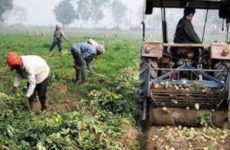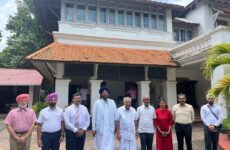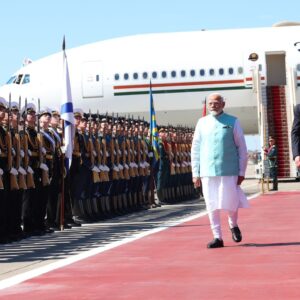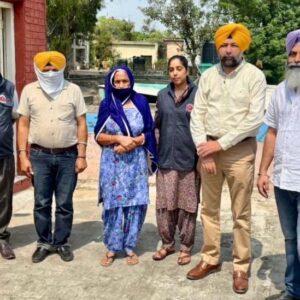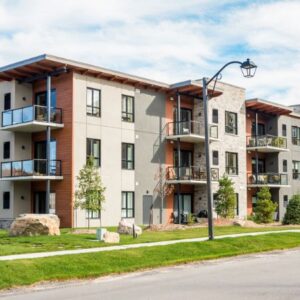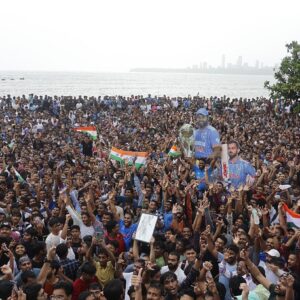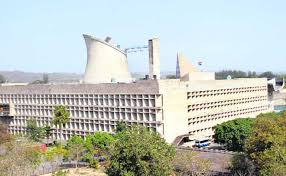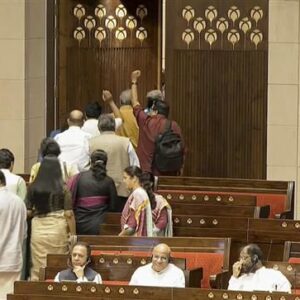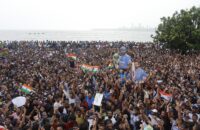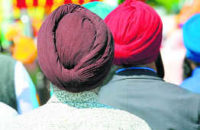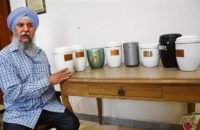 Kathmandu, One thousand EU citizens are still unaccounted for in Himalayan Nepal, diplomats said today, almost a week after a massive earthquake that has claimed more than 6,300 lives and left survivors desperate for aid.
Kathmandu, One thousand EU citizens are still unaccounted for in Himalayan Nepal, diplomats said today, almost a week after a massive earthquake that has claimed more than 6,300 lives and left survivors desperate for aid.
The Europeans had mostly been climbing in the avalanche-hit Everest region and trekking in the remote Langtang range near the epicentre of the quake that ripped up infrastructure and left tens of thousands homeless.
“They are missing but we don’t know what their status is,” EU ambassador to Nepal Rensje Teerink told reporters in the devastated capital Kathmandu, confirming that 12 EU citizens were also known to have died.
Another EU official said on condition of anonymity that the majority were likely to be found safe, but given the difficulty of the terrain and poor communications, their whereabouts were currently unknown.
Concern over the missing underscores the mammoth task facing rescue and relief teams struggling to reach mountainous districts cut off by Nepal’s deadliest quake in more than 80 years.
Desperate survivors living at ground zero have complained they felt abandoned to their fate after losing their loved ones and livelihoods in the disaster.
“The scale and devastation wreaked by the earthquake and the aftershocks would have challenged any government. The Nepal government is leading the response effort and has deployed its available resources,” UN aid chief Valerie Amos told reporters today.
While the rescue of two survivors reinvigorated the search for further signs of life in the ruins of Kathmandu, the Red Cross warned of “total devastation” in far-flung areas.
Six days on from the 7.8-magnitude quake, authorities put the number of dead in Nepal at 6,204 while around 100 more were killed in neighbouring India and China.
Eighteen were killed when a quake-triggered avalanche roared over Everest base camp where scores were gathered for the start of the climbing season.
The popular Langtang trekking route was also hit by an avalanche on Tuesday.
But the full extent of the destruction wrought by Saturday’s quake was still emerging, especially in the Sindhupalchowk region, northeast of Kathmandu, where the sense of desperation was mounting.
“One of our teams that returned from Chautara in Sindhupalchowk district reported that 90 percent of the homes are destroyed,” said Jagan Chapagain, Asia head of the International Federation of Red Cross and Red Crescent Societies.
Breaking News
 Driving Naari Programme launched in Chandigarh
Driving Naari Programme launched in Chandigarh Punjab farmers reaping benefits of Mann Government’s crop diversification initiatives
Punjab farmers reaping benefits of Mann Government’s crop diversification initiatives Punjab and Kerala Join Hands to Address NRI Concerns
Punjab and Kerala Join Hands to Address NRI Concerns Macron refuses French Prime Minister’s resignation after chaotic election results
Macron refuses French Prime Minister’s resignation after chaotic election results Modi lands in Russia for first visit since Ukraine offensive
Modi lands in Russia for first visit since Ukraine offensive Saudi Arabia approves granting citizenship to global experts under Vision 2030
Saudi Arabia approves granting citizenship to global experts under Vision 2030 Vigilance arrests Panchayat Secretary, former Sarpanch for embezzlement in Panchayat funds
Vigilance arrests Panchayat Secretary, former Sarpanch for embezzlement in Panchayat funds Housing crisis in Canada forcing residents to move out of pricier cities: Poll
Housing crisis in Canada forcing residents to move out of pricier cities: Poll Historic Milestone: Canada Appoints Its First Female Chief of Defense
Historic Milestone: Canada Appoints Its First Female Chief of Defense Victory parade of T20 World Cup-winning Indian cricket team concludes in Mumbai
Victory parade of T20 World Cup-winning Indian cricket team concludes in Mumbai Maximizing impact of Aadhar in Punjab
Maximizing impact of Aadhar in Punjab Amritpal Singh to take oath as Khadoor Sahib MP on July 5
Amritpal Singh to take oath as Khadoor Sahib MP on July 5






